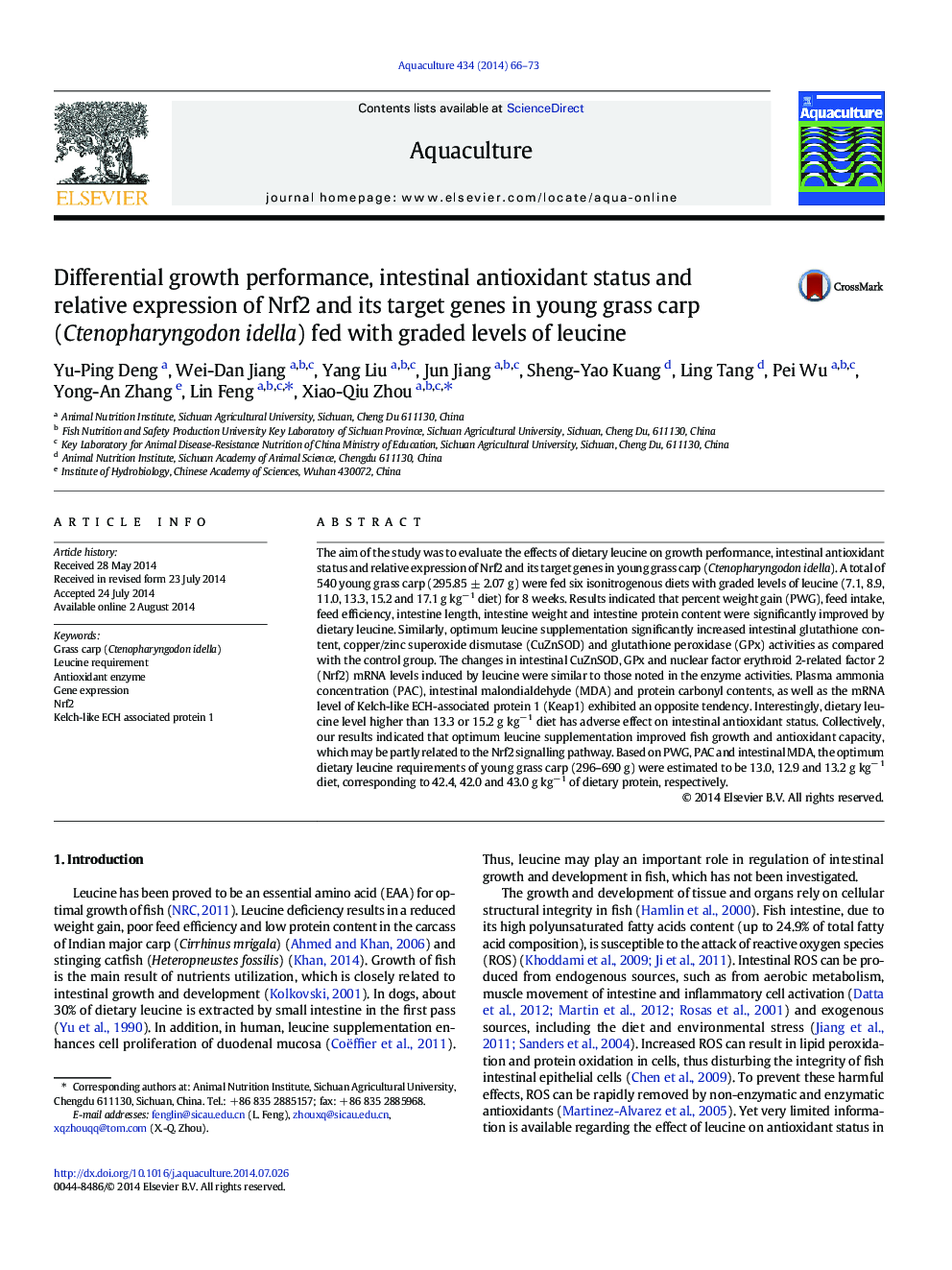| کد مقاله | کد نشریه | سال انتشار | مقاله انگلیسی | نسخه تمام متن |
|---|---|---|---|---|
| 2421682 | 1552853 | 2014 | 8 صفحه PDF | دانلود رایگان |

• Optimal of Leu exerted positive effect on intestinal development.
• Elevated antioxidant enzyme activities by Leu would be regulated at the transcriptional level.
• First study addressing the relationship between Leu and Nrf2 pathway in fish.
• The optimal Leu requirement of grass carp (296–690 g) is 42.4 g kg− 1 of dietary protein based on PWG.
The aim of the study was to evaluate the effects of dietary leucine on growth performance, intestinal antioxidant status and relative expression of Nrf2 and its target genes in young grass carp (Ctenopharyngodon idella). A total of 540 young grass carp (295.85 ± 2.07 g) were fed six isonitrogenous diets with graded levels of leucine (7.1, 8.9, 11.0, 13.3, 15.2 and 17.1 g kg− 1 diet) for 8 weeks. Results indicated that percent weight gain (PWG), feed intake, feed efficiency, intestine length, intestine weight and intestine protein content were significantly improved by dietary leucine. Similarly, optimum leucine supplementation significantly increased intestinal glutathione content, copper/zinc superoxide dismutase (CuZnSOD) and glutathione peroxidase (GPx) activities as compared with the control group. The changes in intestinal CuZnSOD, GPx and nuclear factor erythroid 2-related factor 2 (Nrf2) mRNA levels induced by leucine were similar to those noted in the enzyme activities. Plasma ammonia concentration (PAC), intestinal malondialdehyde (MDA) and protein carbonyl contents, as well as the mRNA level of Kelch-like ECH-associated protein 1 (Keap1) exhibited an opposite tendency. Interestingly, dietary leucine level higher than 13.3 or 15.2 g kg− 1 diet has adverse effect on intestinal antioxidant status. Collectively, our results indicated that optimum leucine supplementation improved fish growth and antioxidant capacity, which may be partly related to the Nrf2 signalling pathway. Based on PWG, PAC and intestinal MDA, the optimum dietary leucine requirements of young grass carp (296–690 g) were estimated to be 13.0, 12.9 and 13.2 g kg− 1 diet, corresponding to 42.4, 42.0 and 43.0 g kg− 1 of dietary protein, respectively.
Journal: Aquaculture - Volume 434, 20 October 2014, Pages 66–73